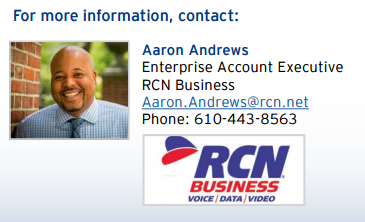 Having a disaster recovery plan is crucial to business. Unplanned outages can cause disastrous outcomes, whether related to a power outage, server crash or a natural disaster. While some businesses never recover from an outage, others survive – but with varying levels of success. Data today is the lifeblood of most businesses, and when access to it is blocked, companies want to know that they can easily recover their data – either immediately from another location or via a full restoration once the network is functional.
Having a disaster recovery plan is crucial to business. Unplanned outages can cause disastrous outcomes, whether related to a power outage, server crash or a natural disaster. While some businesses never recover from an outage, others survive – but with varying levels of success. Data today is the lifeblood of most businesses, and when access to it is blocked, companies want to know that they can easily recover their data – either immediately from another location or via a full restoration once the network is functional.
Organizations always face the possibility of confronting some form of disaster or unplanned outage, so a sound Business Continuity/Disaster Recovery (BC/DR) strategy is critical. Disaster Recovery (DR) planning is the process of restoring an IT infrastructure in the quickest manner possible. It especially comes into play when Business Continuity (BC) plans — arrangements that allow a business to continue operations during a crisis — and other processes fail, or were never in place. The safeguarding of employees, as well as the protection of facilities, technology and customer data should be a top organizational priority. However, there are often issues and restraints facing an organization’s BC/DR planning, such as balancing risks and costs, limited budgets and inadequate applications, communications, data backup and redundancy.
Disaster Recovery is often taken for granted within an organization. Sometimes, the Information Technology (IT) department is given responsibility for disaster planning because it’s keenly interested in keeping IT systems up and running during and immediately following disasters. However, a survey of more than 250 IT managers revealed that just 31% agreed that their organizations were prepared to
handle outages and disasters.
Today, IT end-users and customers require constant access to their applications. The time it takes an organization to recover from a system’s downtime or data loss can cause financial peril, even leading to a company closing its doors. Recent studies have found that the average cost per hour of downtime is $163,000. When an outage occurs, businesses need a backup provider to ensure their communications systems stay up and running. Let’s explore some of the trends driving the use of BC/DR within specific sectors: healthcare, financial services and hospitality/e-commerce.
Healthcare Disaster Recovery
A robust BCP is imperative for a healthcare organization, but establishing it can be a daunting task. Requirements include keeping clinical operations open 24/7/365, providing safe and secure facilities, and ensuring compliance with Health Insurance Portability and Accountability Act (HIPAA) and Electronic Health Record (EHR) regulations through reliable, secure and redundant network routes. All of these requirements must be met at all times and, when disaster strikes, recovery of these functions is of the utmost importance.
Financial Services Disaster Recovery
In the financial industry, the security of data is paramount. Financial firms, brokers and financial services providers are constantly
working to make the most secure trades, and they must adhere to complex regulations related to security and BC/DR at all times.
Having a solid BC/DR plan in place, and ensuring redundancy and uptime with limited to zero failure is extremely important.
Hospitality Industry Disaster Recovery
Hospitality organizations and other e-commerce businesses depend on reliable and secure communications infrastructure. Hotels, restaurants and retail stores are increasingly expected to offer free Wi-Fi almost everywhere and at all times, and pertinent guest information, such as credit card numbers and billing specifics, is stored on computers. If these systems fail, a plan must be in place to ensure they are back up and running immediately.
WHAT CAN YOU DO?
People and technology are more interdependent than ever, and that relationship will only continue to strengthen. RCN Business offers a full suite of communications technology solutions suited for BC/DR planning, including E-Line point-to-point and E-LAN multi-point Ethernet, high-speed Internet, voice, video and network solutions. RCN Business provides tailored communications services over its wholly owned state of the art fiber-rich network. A dedicated RCN Business account representative can help identify a business’s goals and challenges and work to deliver an intelligent customized solution that meets a business’s specific needs.
Wholly Owned and Locally Managed Fiber-Rich Network: RCN maintains and operates its own resilient, fiber-rich network, offering extensive fiber density with redundancy and enhanced performance. Dedicated Internet Access: RCN Business Dedicated Internet Access (DIA) provides a dedicated, fiber-based connection between a Local Area Network and Internet. With available speeds up to 10 Gbps, RCN Business DIA is ideal for businesses requiring more bandwidth and a highly secure dedicated connection.
24/7/365 Dedicated Business Support: RCN Business’s U.S.-based Network Operations Center (NOC) proactively monitors your network, while local technical teams and a dedicated account manager are available 24/7/365 to attend to your business’s needs and handle any emergency that might occur.
Hosted Voice: Hosted Voice is a fully managed cloud-based phone system with the intuitive features a business needs to run a faster, more productive and efficient operation, and companies can use it to bolster their disaster recovery plans. In the event of a disaster, businesses must keep in touch with customers and partners. Hosted Voice makes that possible – as it sits in the cloud, allowing a business to access its functionality online and even plug its phones into a modem to create a virtual office space.
E-Line: For businesses in need of connecting two locations, E-Line service provides a secure Point-to-Point Ethernet connectivity between two user network interfaces so that they appear to share the same LAN despite the distance between them.
E-LAN: Providing multi-point connectivity, E-LAN services provide a transparent Layer 2 virtual LAN that can seamlessly connect multiple sites, such as multiple branches or satellite offices.
For more information, please visit www.rcn.com/business.
To download the RCN Business Disaster Recovery ebook, please visit http://rcn.com/business/news-and-events/free-ebook-disasterstrikes/



